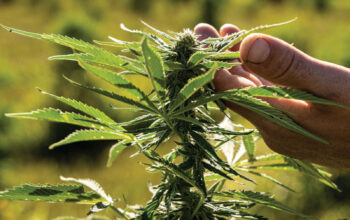How Diabetes Management is Improved By TCM
Traditional Chinese Medicine has been used successfully for a very long time to treat diabetes and its effects.
Since the first century BCE, the medical treatise Huang Di Nei Jing (The Yellow Emperor’s Inner Classic) has made mentioned the illness known as xiao-ke, which is characterized by constant hunger and thirst, excessive urine, and weight loss.
Its precise translation is “wasting thirst,” and it was believed to be brought on by consuming excessive amounts of fatty, sweet, or rich food.
TCM practitioners currently think that one of the four main contributing factors to the root cause of diabetes is the depletion of yin energy, a cold, dark, and earthy energy, along with excessive asthenic fire in the body.
There are three other typical causes of yin depletion and excessive fire in the body, in addition to fatty, sugary, spicy, and alcoholic meals and drinks, which all weaken the spleen and encourage damp-heat generation:
A turbulent emotional existence that disrupts the body’s energy flow and causes qi stagnation, which causes an excess of internal fire;
Energy imbalances and disruptions associated with birth;
The kidney’s capacity to give yin to the body as a whole is reduced by excessive sexual activity, which depletes renal essence.
Symptoms serve as the direction for treatment
TCM, in contrast to conventional medicine, places more emphasis on a patient’s symptoms than their blood glucose levels. The three different forms of wasting symptoms are upper, middle, and lower wasting.
The most noticeable sign of upper wasting is excessive thirst. Other typical symptoms include a rapid heartbeat, a red tongue with a thin yellow coating, and a dry mouth.
If these symptoms are present, a best TCM clinic in Singapore practitioner may diagnose Lung Heat with Depletion of Jin syndrome, which is an increase in internal heat, mostly in the lungs, caused by a shortage in yin jin (body fluids).
This can be treated with Coptis Chinesis (Huang Lian), Ophiopogon Japonicas (Mai Dong), and Radix Rehmannia (Sheng Di Huang).
The most noticeable symptom of Middle wasting is excessive hunger. Common symptoms include bad breath, weight loss, oral ulcers that reoccur often, increased thirst and urine output, constipation with dry stools, a red tongue with a yellow coating, and a rapid, strong pulse.
Stomach Fire Syndrome is frequently treated with Jade Maiden Decoction, which is made from Gypsum Fibrosum (Shi Gao), Rhizoma Anemarrhenae (Zhi Mu), and Gardenia Jasminoides (Zhi Zi).
In addition to fatigue, dizziness, tinnitus (ear ringing), dry lips, dry and itchy skin, a red tongue with little or no coating, and a thin and quick pulse, lower wasting is also characterized by frequent, turbid urination, which is frequently accompanied by lower lumbar discomfort and knee weakness.
Renal syndrome, which is typically treated with six-flavor Rehmannia pills made from Schisandra (wu wei zi), Chinese yam (shan yao), and wolfberries or goji berries, is caused by these signs and symptoms of a yin deficiency (Gou Qi Zi).
“The main objective of TCM Singapore therapy for diabetes is to invigorate the spleen (pancreas) and regenerate the kidneys,” says Tang Yue, senior physician at Eu Yan Sang.
TCM is being applied in order to get better outcomes.
Particularly in the past ten years, scientific data has supported the use of TCM to supplement or add to conventional medicine in the treatment of diabetes and to lessen the risks associated with specific medications.
In a 2013 study, 800 patients either received glibenclamide alone or the “Xiaoke Pill,” a concoction of Chinese herbs plus the medication. The anti-diabetic medicine glibenclamide, which is frequently prescribed to treat type 2 diabetes, has been related to medication-induced hypoglycemia.
After 48 weeks, individuals who took the Xiaoke Pill showed comparable improvements in glycemic control and a much-reduced risk of hypoglycemia than those who used glibenclamide. The American-based Pennington Biomedical Research Center handled the controlled, double-blind experiment in China.
The use of TCM in conjunction with western medicine must always be done with the knowledge and counsel of both a registered TCM practitioner and a western medical expert, which is important to highlight.




